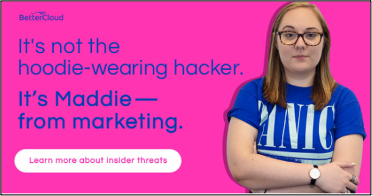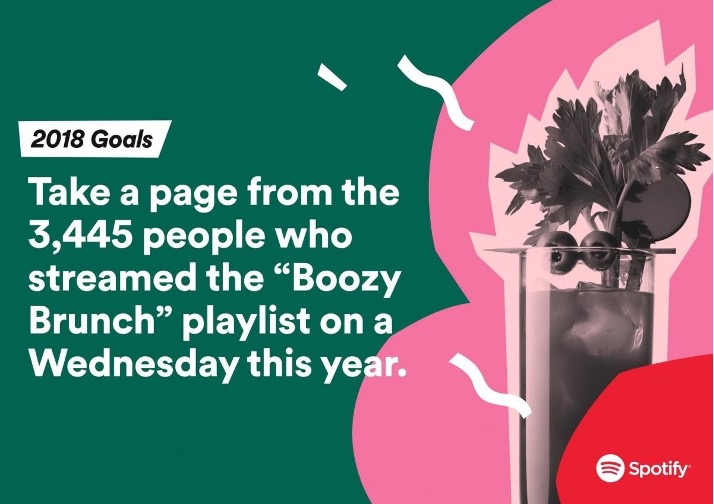
The best-kept secret of all marketing campaigns?
It is easier than you may think. You must know where you’ve been to see where you are going. How do you do this? Start by understanding whom you’re already doing business with today. It’s the very first thing I do when helping a client develop a campaign optimization strategy.
All too often, however, folks want to skip the preliminaries and get straight to either emailing their entire database with the latest product or service promotion or paying for broad-stroke advertising on what their media agency proclaims to be the hottest, most relevant platforms of the moment (goals, amirite?).
The problem is that there is often a vast gap between whom the business thinks their customers are, whom they have the best opportunities to convert to buying customers within the market, and whom the company is speaking to and working with to close deals.
So, what’s the best way to validate who you should be marketing to at various stages of the buyer’s journey so you can bring more leads into your pipeline and keep prospects moving in the right direction once engaged?
Strategic segmentation efforts.
It may sound like a no-brainer, but if you’re launching campaigns to the wrong audience, you will not only throw away a valuable budget — you’ll also miss the opportunity to convert actual prospects into buyers.
The better you know your existing customers, the better you can refine messaging and build audiences for new prospects. We’ve all come across advertising in our day-to-day digital life that caught our attention (unlike the sea of ads that we typically just let pass by), and we can each think of an email campaign that used language and imagery that made us stop and think, “Hey, these guys know me!”
Here are a few examples of brands that know their customers so well that we are ALL super clear on whom they are targeting:



To help ensure you market to the right people with the right message at the right time, follow the four steps below.
1. Verify which job titles are associated with Closed-Won deals.
To understand who your ideal customer is, you need to take a very close look inside your database. Which titles are associated with your Closed-Won business? Are the people you think are in your database the same people who are in your database?
99.975% of the time, our clients are shocked — SHOCKED! — to learn that they don’t have the appropriate audience in their database to run a targeted campaign.
One client, for example, was certain they needed to reach out to a specific job title. They were ready to run several email campaigns targeting this job title. So, I asked them to confirm whether those job titles even existed in their database today. And if they did exist, how many were there? After taking a closer look at their database, this is what we found:
- A tiny percentage of the job title that Sales and Marketing assumed was associated with their target audience.
- There was also a lack of job title consistency (often a job function, but no job level), making it challenging to pinpoint whom their ideal customer is based on who was already a client.
Also, it’s essential to keep in mind that while the sales team will typically know whom they speak to in an account, they may not have the job role and function documented in the CRM associated with Closed-Won business. Or, sometimes the job title listed on the account is the primary decision-maker, but not the ideal customer, which in many cases is just not the right person to target inside the business with top-of-funnel marketing.
You need to understand who or where the entry points are with starting a new conversation with new business accounts in the first place to be able to repeat and optimize the process.
2. Determine next steps based on your database’s current reality.
Based on your analysis, you should be able to determine the following:
- The percentage of your database with the job title and/or function that can drive demand is a good number. Congratulations, start running those campaigns! If it’s low, it’s time to take a step back and develop a strategy to attract the right people into your database.
- Whether you need to undertake data normalization efforts to ensure your job role, title, and function naming structure is consistent.
- If you need to update your accounts with the entire buying committee, including the critical decision-maker, key influencer, and so on, to make it easier to determine who all the relevant players are (and target them with relevant campaigns).
What if the contacts currently in your database don’t support the direction your business is heading in now? Nine times out of 10, our clients will tell us, “That’s not whom we want to focus on at all!” Or, maybe that audience made sense for them 5-10 years ago, but now they need to focus on a different audience to meet their current business objectives.
Before you go any further, it’s crucial to have a meeting of the minds between Sales and Marketing to determine how to move forward. Gain alignment on whom you’ve done business with previously and what direction you’d like to take in the future.
3. Build your buyer personas.
Now that Marketing and Sales have agreed on which job titles to target with your top-of-funnel marketing efforts, it’s time to drill down even further and build your buyer personas. Creating your buyer personas is essential to determining your prospects’ pain points and motivating drivers necessary for developing an effective buyer’s journey. Because if you can’t even get your prospects’ attention, how can you expect them to take action?
The good news is that spending the time upfront to create your personas can pay off big. A study found that companies that use personas increased their total marketing-generated revenue by 171 percent and reduced lead conversion time by 72 percent.
If you don’t take the time to define the buyer persona’s needs, you won’t know which content to develop to engage your prospect at each stage of the buyer’s journey. Those needs may look different to different buyers, which is why it’s paramount to invest the time upfront to build your buyer persona profiles, so you can uncover their needs and pain points before making your buyer’s journey.
It comes down to this: you can’t develop relevant, persona-centric content until you’ve defined your buyer personas. And to do it well, you must work closely with Sales. Laying this initial groundwork will help you develop the right content for your Demand Creation efforts, with buy-in from the sales team.
4. Begin your lead acquisition efforts in earnest.
Once Sales and Marketing have agreed on which job titles you want to target and have verified those titles exist today, then you can:
- Go about the work of structuring your campaigns based on the needs of that job title.
- Start to increase leads at the top of the funnel.
- Fill up your database with relevant contacts who fit your Ideal Customer Profile.
Herein lies the power of segmentation. If you try to optimize any of your campaigns without this foundational work, it won’t go well. Ninety-three percent of companies that segment their database by buyer persona perform better than their competitors.
Segmentation is the key to unlocking revenue.
There’s no such thing as just running a campaign. If you send your campaign to the wrong contacts, you’re spending a ton of money to try to convert people who won’t understand why you’re reaching out to them (and they certainly won’t help you meet your business goals).
To reach the right audience and get the highest return on your investment, you need to make sure you’ve done proper audience segmentation first. That comes from understanding your audience and knowing whom you’re winning business with today. Your database has the information you need. You have to know where to look and what to do once it’s shared its secrets.
Demand Creation is the first step of any solid Demand Generation strategy. It helps ensure a steady flow of leads into your pipeline, and it sets the foundation for everything that follows. Segmentation is a critical component of those efforts.
Want to learn more about Demand Creation and The D3 Methodology, a holistic model for maximizing revenue across Marketing, Sales, and Customer Service? Take a look at this excellent overview and download The D3 Methodology slide deck.

Patti Heath is a Senior Consultant dedicated to partnering with clients to achieve their business goals. She focuses on developing demand generation strategy, including lead generation, lead scoring, lead nurturing, and lead management. She enjoys staying on top of the ever-changing digital industry and identifying the best new technological advances.
The post The Best Kept Secret to Running Successful Marketing Campaigns appeared first on DemandGen.























